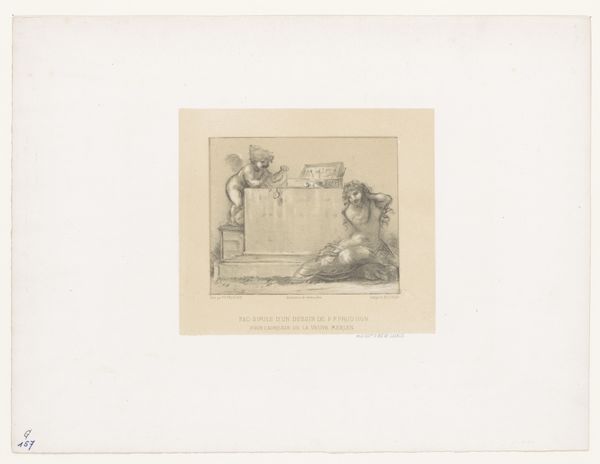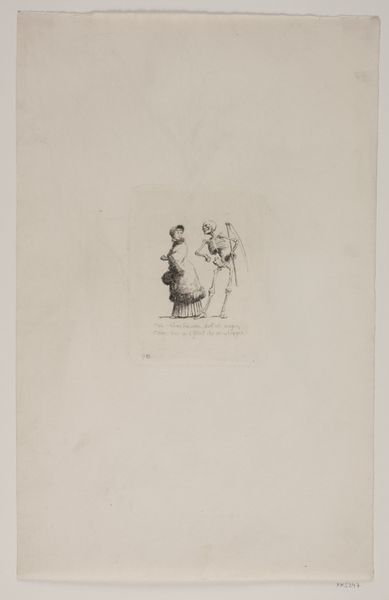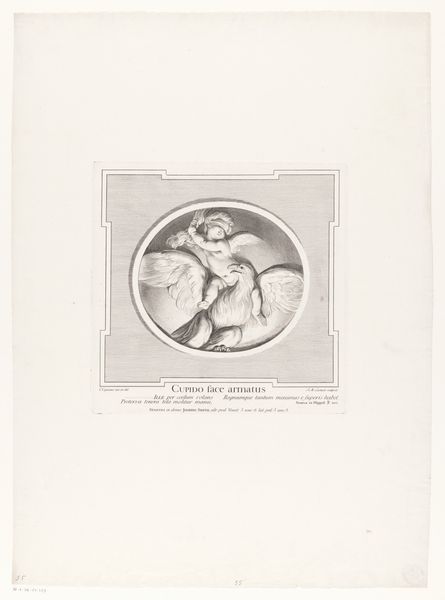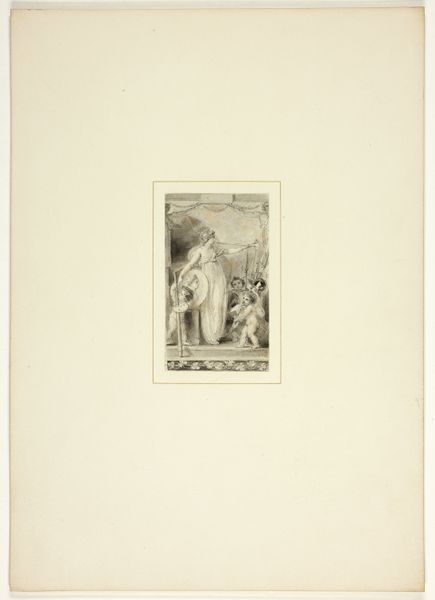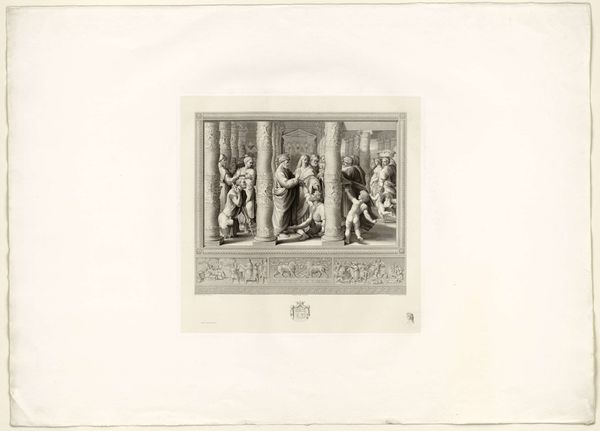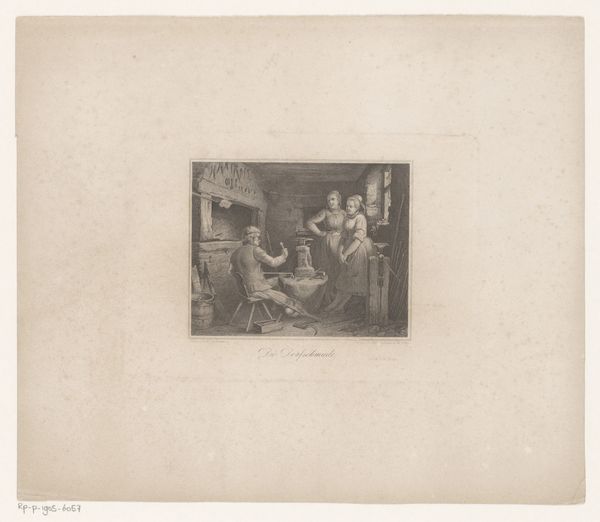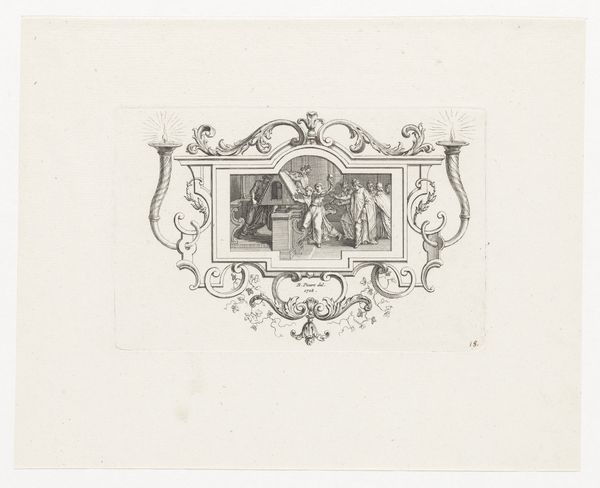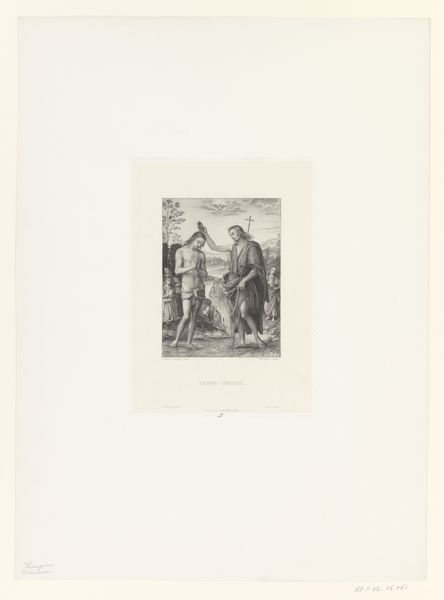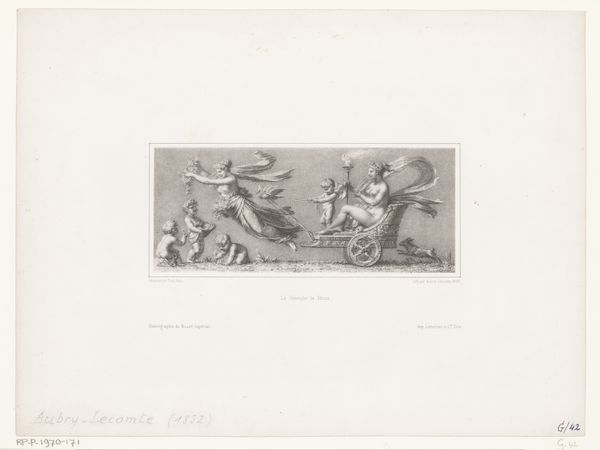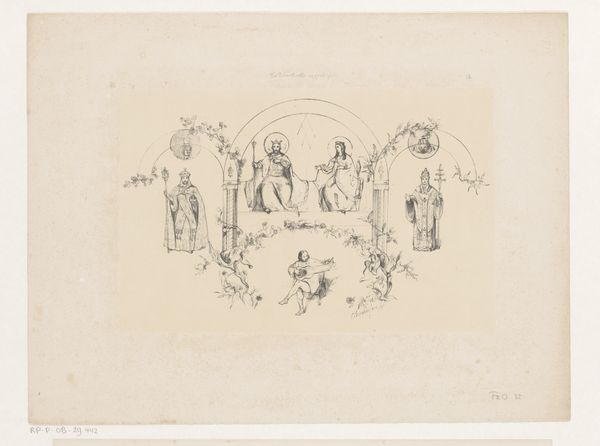
print, engraving
#
neoclassicism
#
ink paper printed
# print
#
figuration
#
history-painting
#
engraving
#
monochrome
Dimensions: height 241 mm, width 318 mm
Copyright: Rijks Museum: Open Domain
Curator: Looking at "Toegangsbewijs voor theater" by Georges Bellenger, likely created between 1860 and 1880, I'm immediately struck by the classical, almost austere presentation of the central elements. Editor: Indeed, it evokes a somber neoclassical sensibility. The stark monochrome and the symmetrical arrangement are quite pronounced. Curator: The engraving, using ink on paper, captures a pivotal intersection of culture and commerce. These access tickets reflected broader changes within performance art's economy, turning what once were patronage supported events, into an exercise in capitalist circulation, dictating not only who attends but, consequently, whose voices were amplified in artistic discourse. Editor: Let’s not disregard how the artist utilizes contrasting dark ink lines against a pale background to accentuate classical forms and neoclassical motifs, which imbue the artifact with the air of Greco-Roman antiquity and lend historical significance. How would this have factored into the aesthetic consumption of that time? Curator: Considering the methods involved—engraving and printing—one must also recognize how the technical proficiency and material components serve an ideological purpose, granting entry to theatrical experiences based on complex criteria. What mechanisms ensured these criteria would be implemented correctly? Did that mean having people dedicated to checking access privileges? Editor: From my perspective, that emphasis of materiality—paper and ink—helps refine the object itself while inviting us to appreciate the symbolic representation rather than a tactile analysis. It has, in many ways, aged like a Greco-Roman sculpture. Curator: And this ageing process only solidifies its status within larger art and social circles; that is, as a printed artwork designed for circulation which granted audiences direct cultural participation dependent on consumer habits! Editor: Fair point. The play between medium, motif, and overall classical presentation reveals interesting nuances concerning its original function within those formative years of art as social engagement. Curator: Right, it serves as proof—material and representational—of changing dynamics involving access rights! Editor: Definitely food for thought in rethinking historical interactions surrounding artistic and performance arts experiences during those revolutionary cultural shifts.
Comments
No comments
Be the first to comment and join the conversation on the ultimate creative platform.
